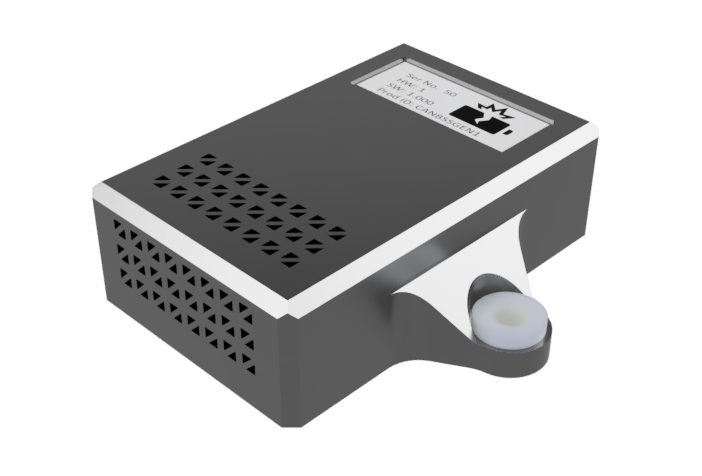Multi-parameter sensor gives early warning of thermal runaway
Metis Engineering has announced the production version of its Battery Safety Sensor, a CAN-based device designed to detect a lithium-ion cell venting, an early sign of catastrophic EV battery failure.
It is designed to be mounted inside an EV battery pack, where it ‘sniffs’ the air to pick up a range of parameters including hydrogen, volatile organic compounds (VOCs), pressure changes, humidity, dew point and absolute water content.
This data can be used to cross-check with other inputs, such as cell temperatures; the sensor then relays the data over a configurable CAN interface to a control unit such as the vehicle’s ECU to cut the load from that part of the battery pack, to prevent thermal runaway.

(Images courtesy of Metis Engineering)
The sensor also includes an accelerometer so that it can monitor shock loads and impact duration, of up to 24 g, that the battery pack may experience. It can be fitted to the battery pack during manufacture, and will monitor the pack throughout transportation from factory to fitting in the EV.
Should the EV be involved in a collision, the sensor will show whether the pack experienced loadings above safe levels, and for what duration. This could inform decisions as to whether the battery pack requires a service, reuse for domestic or industrial use, or be sent for recycling.
To prevent overheating, most packs are cooled in some way. If they are cooled below the ambient temperature though, they can dip below the dew point, the temperature at which the air can’t absorb moisture so it condenses onto cooler surfaces. The sensor will monitor the dew point in the battery pack and trigger a warning before condensation settles on the battery terminals.
Metis says the sensor typically detects venting within seconds.

ONLINE PARTNERS






















